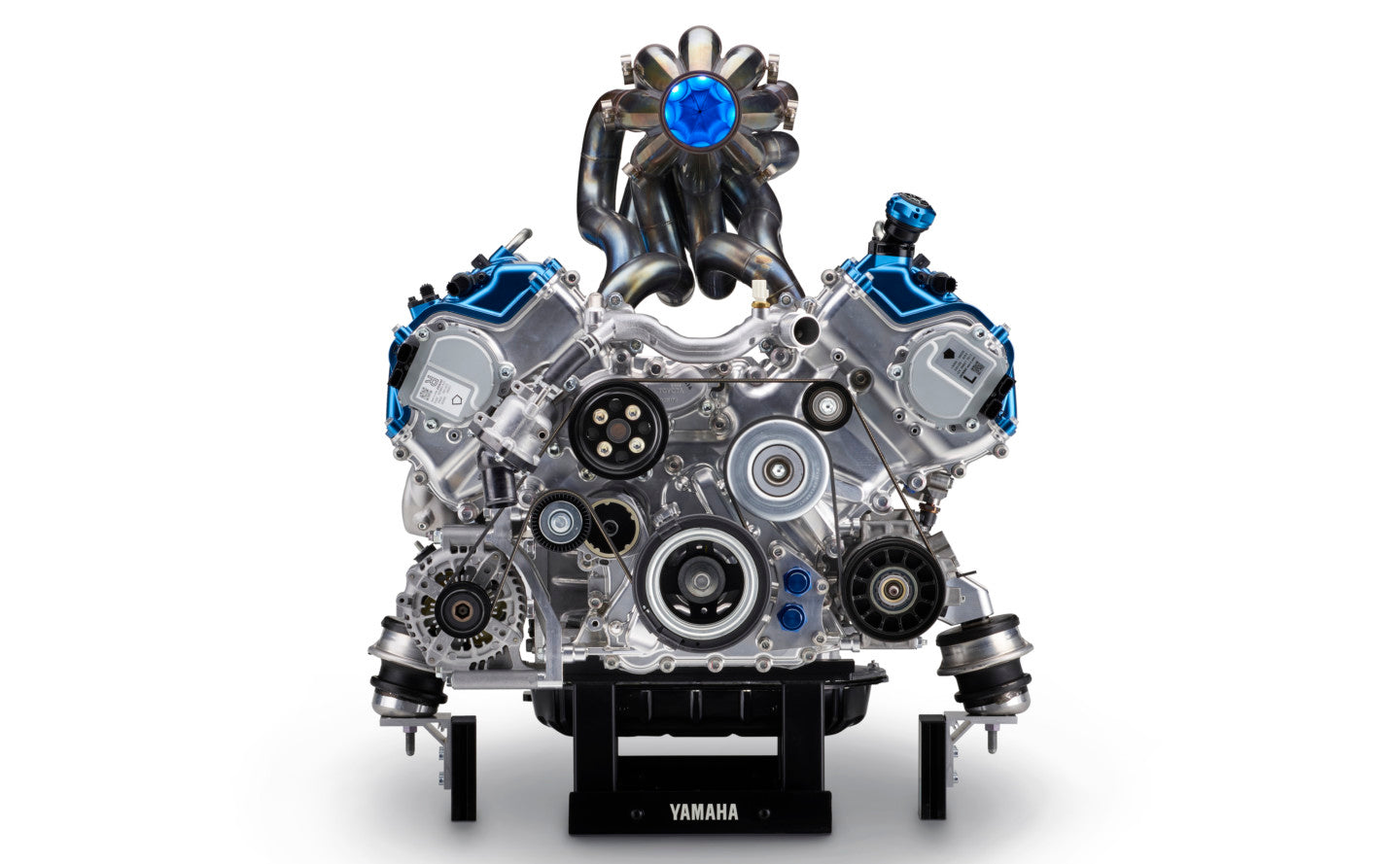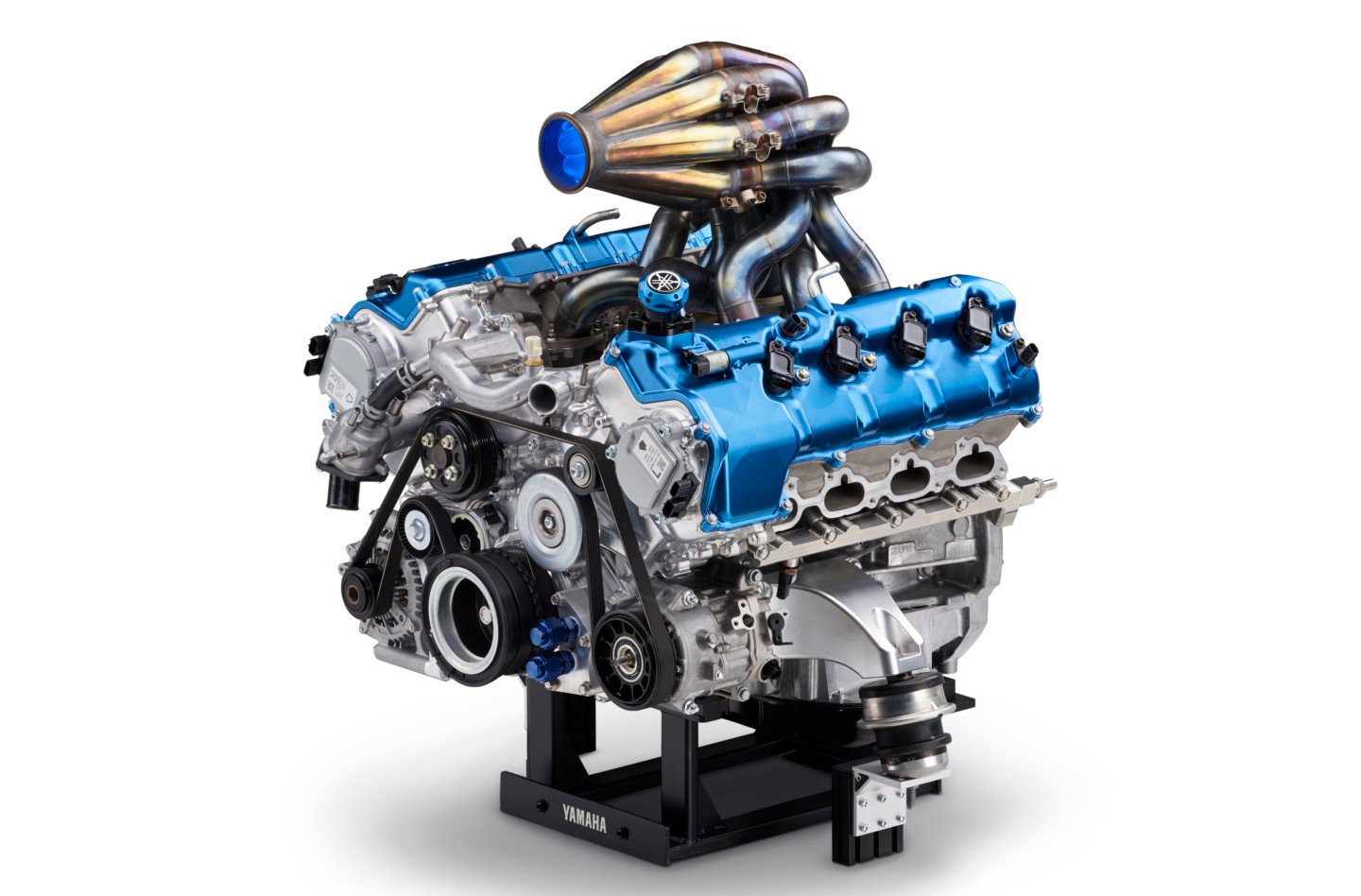
A Performance V8 Hydrogen-Combustion Engine
Japanese OEMs Develop A Performance V8 Hydrogen-Combustion Engine
While most of the automotive giants around the globe are pursuing battery-electric vehicles as the next step in the evolution of transportation, five of the biggest manufacturers in Japan are hedging with a bet on hydrogen-fueled internal combustion engines. The five bandits, if you will, include Toyota, Subaru, Yamaha, Kawasaki, and Mazda. We’ve covered hydrogen combustion previously, with more on the way very soon.

The prototype engine displaces 5.0 liters and is based on the Lexus RC-F powerplant. In its hydrogen-combustion form, it makes 455 horsepower at 6,800 rpm and 398 lb-ft at 3,600 rpm.
Takeshi Yamada is the head of the Technical Research & Development Center’s Automotive Development Section for hydrogen engines, and he believes there is great performance potential in liquified hydrogen.
“I started to see that engines using only hydrogen for fuel actually had very fun, easy-to-use performance characteristics,” says Yamada.
For the past five years, this Japanese skunkworks team of engineers has assembled an impressive proof-of-concept in a V8 hydrogen engine, which Yamaha developed for Toyota. Based on the 5.0-liter engine currently in the Lexus RC F, the cylinder heads have been modified to help optimize combustion with liquified hydrogen as a fuel, and the intake manifolds have been similarly reworked. With the new fuel and modifications, the prototype engine makes 455 horsepower and 398 lb-ft of torque (for reference, that’s just a tick under the Gen-3 Coyote engine’s factory output).

The “Hot-V” design puts the gorgeous 8-into-1 exhaust manifold right on center stage. Besides the injectors, the development team worked over the cylinder heads and intake manifolds from the original Lexus designs.
One of the main goals of this collaboration is to establish carbon-neutral fuel in combination with internal combustion engines to provide consumers with more choices besides battery-electric vehicles. As a side benefit, engineers are finding that the unique characteristics of hydrogen fuel will likely satisfy most ICE enthusiasts without the downside of greenhouse gases (although it still produces NOx, which is manageable).
“Hydrogen engines house the potential to be carbon-neutral while keeping our passion for the internal combustion engine alive at the same time,” said Yamaha President Hidaka in November.
Toyota has been reluctant to give up on the hydrogen dream since it introduced the Mirai fuel cell vehicle in 2014. To further prove it is serious about developing hydrogen ICE, it has been competing in the Super Taikyu endurance racing series with a hydrogen-powered Toyota Corolla Critics have pointed out that making hydrogen fuel is ridiculous because it is usually made with not-so-earth-friendly methane gases. And that the energy used to create the fuel would be better put to use in battery-powered vehicles. Hydrogen burned in ICE does create NOx, so it is not exactly a zero-emission fuel. Also, there’s a lack of infrastructure for hydrogen, with only about 8,000 hydrogen-powered vehicles on the road today (99% in California). It also costs about $16 a gallon a the present time. In comparison, the electric-charging grid is growing exponentially in many parts of the country.
Toyota has teamed up with Fukuoka City to make hydrogen from sewage gasses. Fukuoka City produces a non-CO2-increasing green hydrogen from biogas generated during sewage treatment at the Fukuoka City Chubu Water Treatment Center. Its daily hydrogen production capacity is roughly equivalent to running 60 Toyota Mirai FCVs daily.
And from a more practical perspective, which is the point that Yamada and his colleagues are promoting, is that there should be multiple types of fuels and systems to get to the zero-emission future. Yamada believes it is necessary to continue to pursue liquified hydrogen ICE solutions to scale it up and drive down costs.
Another significant advantage is that the tooling, engineering, and supply chain is already in place for ICE that could easily be retrofitted for hydrogen. It is, after all, the most abundant element in the universe. It may just be a bridge to the future.
Share


